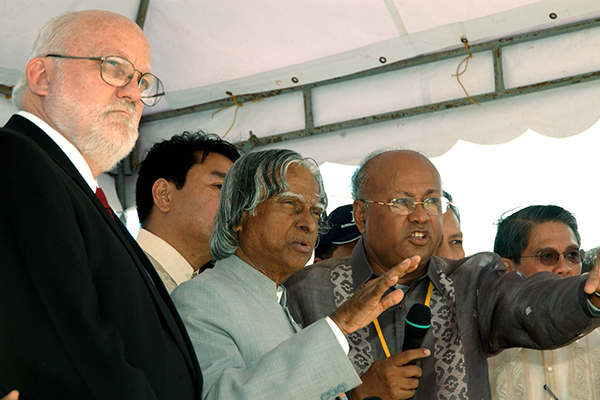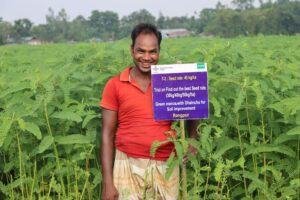
As documented in this issue of Rice Today, India and IRRI have had a very successful relationship over the decades. The introduction of rice variety IR8, which helped save India from a massive famine in the 1970s, marked the true beginning of the success of the partnership. Then, some remarkable results followed such as the development of more than 400 disease- and insect-resistant rice varieties, hybrid rice varieties bred through public and private sector programs, streamlined rice production practices, and improved postharvest technologies for better sustainability and productivity.
The Indian Council of Agricultural Research (ICAR) and IRRI have trained scientists, providing equitable access to information, and conducting socioeconomic research. India has been actively part of IRRI’s priority setting, strategic planning, providing scientific advice, and carrying out research work in the region. Senior Indian scientists and government officials have served almost continuously on IRRI’s Board of Trustees since its creation. Indeed, the partnership has achieved outstanding results—setting a gold standard in international research collaboration.

As the India-IRRI collaboration has matured, so have the needs, expectations, and environment of doing business in relation to what is happening not only in India but also regionally and globally. India has a strong national rice research program and has increasing participation by the private sector and civil society organizations. IRRI should not take over functions that the public or private sector should have in the country. Our comparative advantage is strong in science and innovation, looking at the “big picture,” training in frontier areas, and catalyzing the transfer of new technologies to those in the value chain.
Also, we should maintain or even increase our leadership, physical presence, and impact in strategic regions of India where rice is the predominant crop. Considering this, we should play a key role in revolutionizing the rice sector, particularly, in eastern India.
With the establishment of a new regional rice hub in Hyderabad and in close collaboration with ICAR and other public and private sector institutions, the India-IRRI partnership can assist countries in South Asia and Africa in strengthening their rice programs. This would allow us to implement the upstream research agenda agreed upon under the India-IRRI collaborative research program. This includes targeted breeding research and training programs that will benefit other South Asian Association for Regional Cooperation member countries.
India, with its large diversity of soil and climate, provides unique opportunities to develop situation-specific rice varieties that will also be relevant to its neighboring countries.
Although our work will continue to focus on trait and varietal development with many abiotic stresses (drought, submergence, salinity) and biotic stresses (sheath blight and other diseases), we also need to initiate research on emerging problems such as false smut, nematodes, and low-light intensity. Shorter-duration rice, which can fit in diverse cropping systems, should continue to be a priority. The demand for good grain quality is increasing along with the rising purchasing power of a significant sector of rice consumers. With emerging labor shortages and rising labor wages, we need to focus on conservation tillage and direct seeding of rice. We need to conduct agronomic systems research and develop best management practices for key rice systems.
We should aim to maximize the yield potential of new varieties. There is a strong need for technology targeting and the development of extrapolation domains for an efficient uptake of new technologies. Although most research themes and activities will cut across all the top-10 rice-growing states of India, relative priority will differ.
As we continue our strong partnership with ICAR, the Department of Agriculture and Cooperation, and state agricultural universities, we should develop linkages with India’s seed industry. The country has a vibrant seed industry with many large and small players. Some seed companies have a very active R&D and breeding program, which includes hybrid rice. IRRI should play a major role in trait discovery and in the development of a new generation of parental lines and varieties, including hybrids, for small and large seed companies that meet consumer preferences and are adaptive to rainfed ecosystems.
Institutions like IRRI increasingly face funding constraints and have to work on their goal of full cost recovery. We should continue to explore additional and new project funding, including philanthropic donations and grants from Indian donors.
_________________________________________
Dr. Ladha is principal scientist and IRRI representative for India and Nepal.










